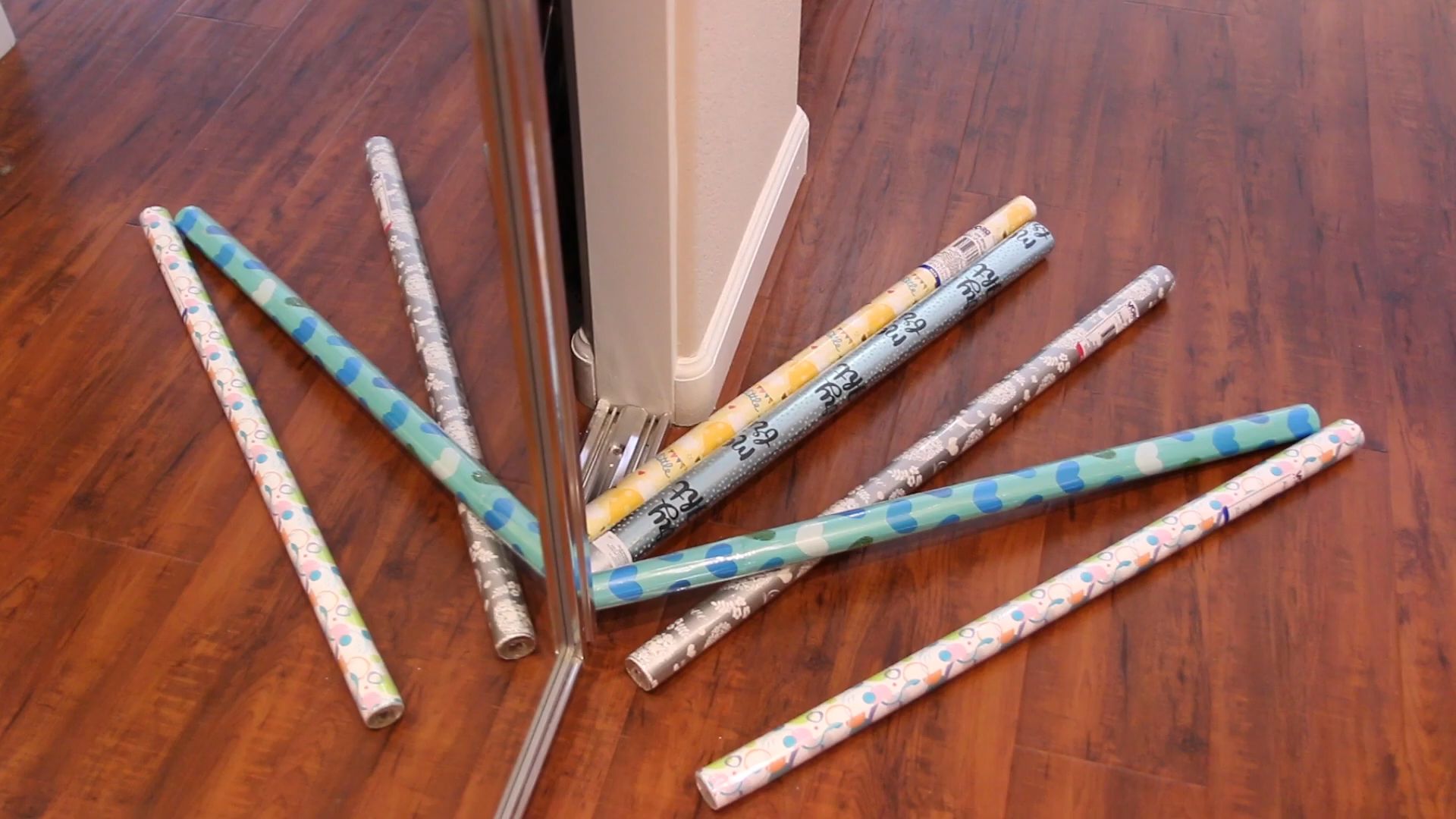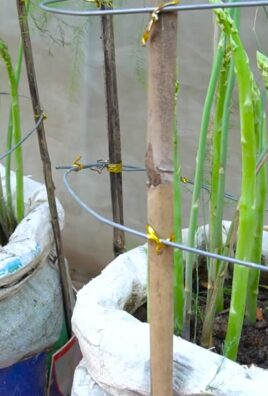Grow Lemongrass at Home? Absolutely! Imagine stepping out into your own backyard and snipping fresh, fragrant lemongrass for your favorite Thai curry or a soothing cup of tea. It’s easier than you think, and I’m here to show you how! For centuries, lemongrass has been a staple in Asian cuisine and traditional medicine, prized for its unique citrusy flavor and numerous health benefits. From ancient Ayurvedic practices to modern-day kitchens, this versatile herb has stood the test of time.
But why should you bother to grow lemongrass at home? Well, store-bought lemongrass can sometimes be expensive and lack that vibrant freshness. Plus, knowing exactly where your herbs come from gives you peace of mind. In this article, I’ll share some simple, DIY tricks and hacks that will have you harvesting your own lemongrass in no time, even if you don’t have a green thumb. Get ready to transform your garden (or even your windowsill!) into a fragrant oasis.

Growing Lemongrass at Home: A Beginner’s Guide
Hey there, fellow plant enthusiasts! Ever dreamt of having fresh, fragrant lemongrass right at your fingertips? Well, you’re in luck! Growing lemongrass at home is surprisingly easy, and I’m here to guide you through every step of the process. Trust me, the satisfaction of snipping off your own homegrown lemongrass for a delicious Thai curry or a soothing cup of tea is simply unmatched.
Choosing Your Lemongrass
Before we dive into the nitty-gritty, let’s talk about sourcing your lemongrass. You have a couple of options:
* **From the Grocery Store:** This is the easiest and most accessible option. Look for fresh lemongrass stalks that are firm, green at the top, and have a bulbous base. Make sure they look healthy and haven’t started to dry out.
* **From a Nursery or Garden Center:** If you want a head start, you can purchase established lemongrass plants from a local nursery. This will save you some time and effort in the initial rooting phase.
* **From a Friend:** If you know someone who already grows lemongrass, ask them for a division. Lemongrass clumps can be easily divided, giving you a free plant!
Rooting Lemongrass Stalks from the Grocery Store
This is my favorite method because it’s so rewarding to watch those roots sprout! Here’s how to do it:
1. **Prepare the Stalks:** Trim the top of the lemongrass stalks, leaving about 4-5 inches of green. This will help the plant focus its energy on root development. Remove any dry or brown outer leaves, exposing the fresh, green stalk underneath.
2. **Soak in Water:** Place the prepared lemongrass stalks in a glass or jar filled with about 1-2 inches of water. Make sure the base of the stalks is submerged, but the leaves are above the water line.
3. **Find a Sunny Spot:** Place the glass or jar in a warm, sunny location, like a windowsill. Lemongrass loves sunlight!
4. **Change the Water Regularly:** Change the water every 1-2 days to keep it fresh and prevent bacterial growth. This is crucial for successful rooting.
5. **Be Patient:** It usually takes about 2-3 weeks for roots to start appearing. You’ll see small, white roots emerging from the base of the stalks. Don’t get discouraged if it takes a little longer; just keep changing the water and providing sunlight.
6. **Check for Root Development:** Once the roots are about 1-2 inches long, your lemongrass is ready to be planted!
Planting Your Lemongrass
Now that your lemongrass has roots, it’s time to give it a permanent home.
1. **Choose the Right Pot (or Garden Spot):** Lemongrass needs plenty of space to grow. If you’re planting in a pot, choose one that’s at least 12 inches in diameter. If you’re planting in the garden, make sure to choose a spot that gets at least 6 hours of sunlight per day.
2. **Prepare the Soil:** Lemongrass prefers well-draining soil that’s rich in organic matter. You can use a good quality potting mix for containers or amend your garden soil with compost or well-rotted manure.
3. **Planting in a Pot:** Fill the pot with your chosen soil mix, leaving a few inches of space at the top. Dig a hole in the center of the pot that’s large enough to accommodate the roots of your lemongrass. Gently remove the lemongrass from the water and place it in the hole. Backfill with soil, gently firming it around the base of the plant. Water thoroughly.
4. **Planting in the Garden:** Dig a hole in the ground that’s slightly larger than the root ball of your lemongrass. Gently remove the lemongrass from the water and place it in the hole. Backfill with soil, gently firming it around the base of the plant. Water thoroughly. Space multiple lemongrass plants about 2-3 feet apart.
5. **Mulch (Optional):** Adding a layer of mulch around your lemongrass can help retain moisture, suppress weeds, and regulate soil temperature. Use organic mulch like straw, wood chips, or shredded leaves.
Caring for Your Lemongrass
Once your lemongrass is planted, it’s important to provide it with the right care to ensure it thrives.
1. **Watering:** Lemongrass needs consistent moisture, especially during hot weather. Water deeply whenever the top inch of soil feels dry to the touch. Avoid overwatering, as this can lead to root rot.
2. **Fertilizing:** Feed your lemongrass every 2-3 weeks with a balanced liquid fertilizer during the growing season (spring and summer). This will help promote healthy growth and abundant foliage.
3. **Sunlight:** Lemongrass loves sunlight! Make sure it gets at least 6 hours of direct sunlight per day. If you’re growing it indoors, place it near a sunny window.
4. **Pruning:** Regular pruning will encourage bushier growth and prevent your lemongrass from becoming too leggy. Trim off any dead or brown leaves. You can also harvest the outer stalks as needed for cooking or tea.
5. **Overwintering:** Lemongrass is a tropical plant and is not frost-hardy. If you live in a cold climate, you’ll need to bring your lemongrass indoors before the first frost. Place it in a sunny location and water sparingly during the winter months. You can also cut back the foliage to about 6 inches to conserve energy.
6. **Pest and Disease Control:** Lemongrass is generally pest and disease-resistant. However, it can occasionally be affected by aphids or spider mites. If you notice any pests, you can treat them with insecticidal soap or neem oil.
Harvesting Your Lemongrass
The best part about growing your own lemongrass is, of course, harvesting it!
1. **When to Harvest:** You can start harvesting lemongrass when the stalks are at least 1/2 inch in diameter and about 12 inches tall.
2. **How to Harvest:** To harvest, simply grasp the outer stalk near the base and twist and pull. You can also use a sharp knife or pruners to cut the stalk at the base.
3. **Using Your Harvest:** The lower, bulbous part of the stalk is the most flavorful and is typically used in cooking. You can also use the leaves to make tea.
4. **Storing Your Harvest:** Freshly harvested lemongrass can be stored in the refrigerator for up to a week. You can also freeze it for longer storage. To freeze, chop the lemongrass into small pieces and place it in a freezer bag or container.
Troubleshooting
Even with the best care, you might encounter a few challenges along the way. Here are some common problems and how to fix them:
* **Yellowing Leaves:** This can be caused by several factors, including overwatering, underwatering, nutrient deficiencies, or lack of sunlight. Adjust your watering schedule, fertilize regularly, and make sure your lemongrass is getting enough sunlight.
* **Slow Growth:** This can be caused by poor soil, lack of sunlight, or cool temperatures. Amend your soil with compost, move your lemongrass to a sunnier location, and wait for warmer weather.
* **Root Rot:** This is caused by overwatering and can be fatal to your lemongrass. Make sure your soil is well-draining and avoid overwatering. If you suspect root rot, you can try repotting your lemongrass in fresh soil.
* **Pests:** Aphids and spider mites can sometimes infest lemongrass. Treat them with insecticidal soap or neem oil.
Propagating Lemongrass
Once you have a thriving lemongrass plant, you can easily propagate it to create more plants!
1. **Division:** The easiest way to propagate lemongrass is by division. In the spring, carefully dig up your lemongrass plant and divide the clump into smaller sections, each with its own roots and shoots. Replant the divisions in separate pots or in the garden.
2. **Rooting Cuttings:** You can also propagate lemongrass from cuttings. Take a cutting from a healthy stalk, about 4-6 inches long. Remove the lower leaves and place the cutting in a glass of water. Roots should start to develop in a few weeks. Once the roots are about 1-2 inches long, you can plant the cutting in a pot or in the garden.
Enjoying Your Homegrown Lemongrass
Now that you’ve successfully grown your own lemongrass, it’s time to enjoy the fruits (or rather, stalks) of your labor! Here are some ideas:
* **Thai Curry:** Lemongrass is a key ingredient in many Thai curries. Add it to your favorite curry recipe for a burst of citrusy flavor.
* **Lemongrass Tea:** Steep fresh or dried lemongrass leaves in hot water for a soothing and refreshing tea.
* **Soups and Stews:** Add lemongrass to soups and stews for a subtle citrus flavor.
* **Marinades:** Use lemongrass in marinades for chicken, fish, or tofu.
* **Insect Repellent:** Lemongrass has natural insect-repelling properties. Plant it around your patio or garden to keep mosquitoes away.

Conclusion
So, there you have it! Growing lemongrass at home is not only achievable, but it’s also incredibly rewarding. Imagine stepping into your kitchen and having fresh, fragrant lemongrass readily available for your favorite Thai curries, soothing teas, or even as a natural insect repellent. No more last-minute trips to the grocery store or settling for dried, less flavorful alternatives. This simple DIY trick transforms your kitchen into a hub of fresh ingredients.
The benefits extend beyond mere convenience. You’re also gaining control over the quality of your lemongrass, ensuring it’s free from harmful pesticides and grown with love. Plus, the process itself is incredibly therapeutic. Nurturing a plant from a simple stalk to a thriving bush is a deeply satisfying experience.
This method of propagating lemongrass from store-bought stalks is a game-changer for home cooks and gardeners alike. It’s cost-effective, sustainable, and surprisingly easy, even for those without a green thumb. Think of the money you’ll save by not having to purchase lemongrass repeatedly!
Why is this DIY trick a must-try? Because it empowers you to cultivate fresh, flavorful lemongrass right in your own home, offering convenience, cost savings, and a connection to nature.
Looking for variations? Consider experimenting with different types of containers. While a simple glass of water works wonders for rooting, you can eventually transplant your lemongrass into decorative pots to add a touch of greenery to your patio or balcony. You can also try different soil mixes to see what works best for your climate and growing conditions. Some gardeners swear by adding a bit of compost to their potting mix for extra nutrients. Another variation is to try rooting the lemongrass directly in soil, although this method may take a bit longer and require more consistent moisture.
Don’t be afraid to experiment and adapt the process to suit your needs and preferences. The beauty of gardening is that there’s always something new to learn and discover.
We wholeheartedly encourage you to give this DIY trick a try. It’s a small investment of time and effort that yields a bountiful harvest of fresh, flavorful lemongrass. Once you’ve experienced the joy of growing your own, you’ll never go back to store-bought again.
We’re confident that you’ll be amazed at how easy and rewarding it is to grow lemongrass at home. So, grab a few stalks from your local grocery store, follow our simple steps, and get ready to enjoy the taste of fresh, homegrown lemongrass in all your culinary creations.
And most importantly, we want to hear about your experience! Share your photos, tips, and stories with us in the comments below. Let’s create a community of lemongrass enthusiasts and inspire others to embrace the joy of homegrown herbs. What challenges did you face? What successes did you celebrate? Your feedback is invaluable and helps us refine our methods and share the knowledge with others. Happy growing!
Frequently Asked Questions (FAQ)
What kind of lemongrass should I buy from the store?
Look for lemongrass stalks that are firm, green, and have a bulbous base. Avoid stalks that are dry, brown, or have signs of mold. The fresher the stalks, the better your chances of successful rooting. Ideally, choose organic lemongrass to avoid any potential pesticide residue.
How long does it take for lemongrass to root?
Generally, you should start seeing roots emerge within 1-3 weeks. The timeframe can vary depending on factors like water quality, temperature, and the freshness of the lemongrass stalks. Be patient and change the water every few days to keep it clean and fresh.
What kind of water should I use?
Tap water is generally fine, but if your tap water is heavily chlorinated, it’s best to let it sit out for 24 hours before using it to allow the chlorine to dissipate. Alternatively, you can use filtered water or bottled water.
How often should I change the water?
Change the water every 2-3 days to prevent the growth of bacteria and algae. This will also ensure that the lemongrass stalks have access to fresh, oxygenated water, which is essential for root development.
When should I transplant the lemongrass to soil?
Once the roots are about 2-3 inches long, it’s time to transplant your lemongrass to a pot filled with well-draining potting mix. Choose a pot that is at least 6 inches in diameter to give the roots plenty of room to grow.
What kind of soil should I use?
Use a well-draining potting mix that is rich in organic matter. You can also add some perlite or vermiculite to improve drainage. Lemongrass prefers slightly acidic soil, so you can add a small amount of peat moss to the mix.
How much sunlight does lemongrass need?
Lemongrass thrives in full sun, meaning it needs at least 6-8 hours of direct sunlight per day. If you’re growing your lemongrass indoors, place it near a sunny window or use a grow light.
How often should I water lemongrass?
Water your lemongrass regularly, keeping the soil consistently moist but not waterlogged. During hot, dry weather, you may need to water it more frequently. Check the soil moisture by sticking your finger into the soil. If the top inch feels dry, it’s time to water.
Does lemongrass need fertilizer?
Yes, lemongrass benefits from regular fertilization. Feed it with a balanced liquid fertilizer every 2-3 weeks during the growing season (spring and summer).
How do I harvest lemongrass?
To harvest lemongrass, simply cut off the stalks near the base of the plant. You can use a sharp knife or pruning shears. Harvest only what you need, and the plant will continue to grow.
Can I grow lemongrass indoors year-round?
Yes, you can grow lemongrass indoors year-round, but you’ll need to provide it with adequate sunlight and humidity. Place it near a sunny window or use a grow light, and mist it regularly to increase humidity.
Is lemongrass a perennial or an annual?
Lemongrass is a perennial in warm climates (zones 9-11), meaning it will come back year after year. In colder climates, it is typically grown as an annual, meaning it will need to be replanted each year. However, you can overwinter your lemongrass indoors by bringing it inside before the first frost.
How do I overwinter lemongrass?
To overwinter lemongrass, bring it indoors before the first frost and place it in a sunny location. Water it sparingly during the winter months, allowing the soil to dry out slightly between waterings. You can also reduce fertilization during the winter.
Can I grow lemongrass from seed?
Yes, you can grow lemongrass from seed, but it’s generally easier and faster to propagate it from stalks. If you do choose to grow it from seed, start the seeds indoors 6-8 weeks before the last frost.
My lemongrass is turning brown. What’s wrong?
Browning leaves can be caused by several factors, including underwatering, overwatering, lack of sunlight, or nutrient deficiencies. Check the soil moisture, ensure that the plant is getting enough sunlight, and fertilize it regularly.
Is lemongrass safe for pets?
Lemongrass is generally considered safe for pets, but it’s best to prevent them from eating large quantities of it. Some pets may experience mild digestive upset if they consume too much lemongrass.
Can I use lemongrass as an insect repellent?
Yes, lemongrass contains citronella oil, which is a natural insect repellent. You can crush the leaves and rub them on your skin to repel mosquitoes and other insects. You can also plant lemongrass around your patio or deck to create a natural insect barrier.
How can I use my homegrown lemongrass?
The possibilities are endless! Use it in soups, curries, stir-fries, teas, and marinades. You can also use it to make lemongrass-infused oil or vinegar. Experiment and discover your favorite ways to use this versatile herb. Growing lemongrass at home opens up a world of culinary possibilities.





Leave a Comment